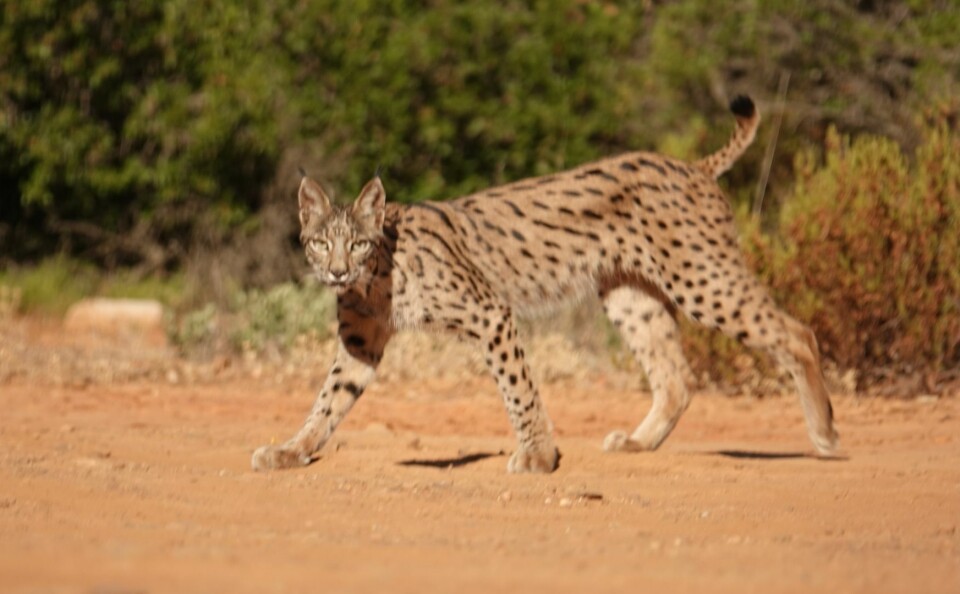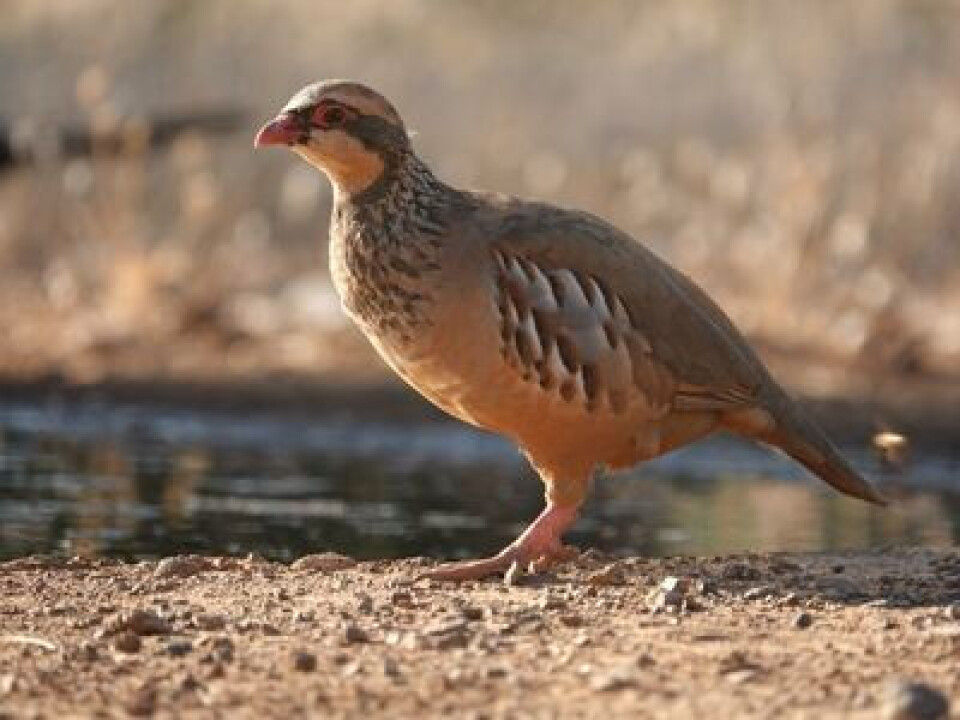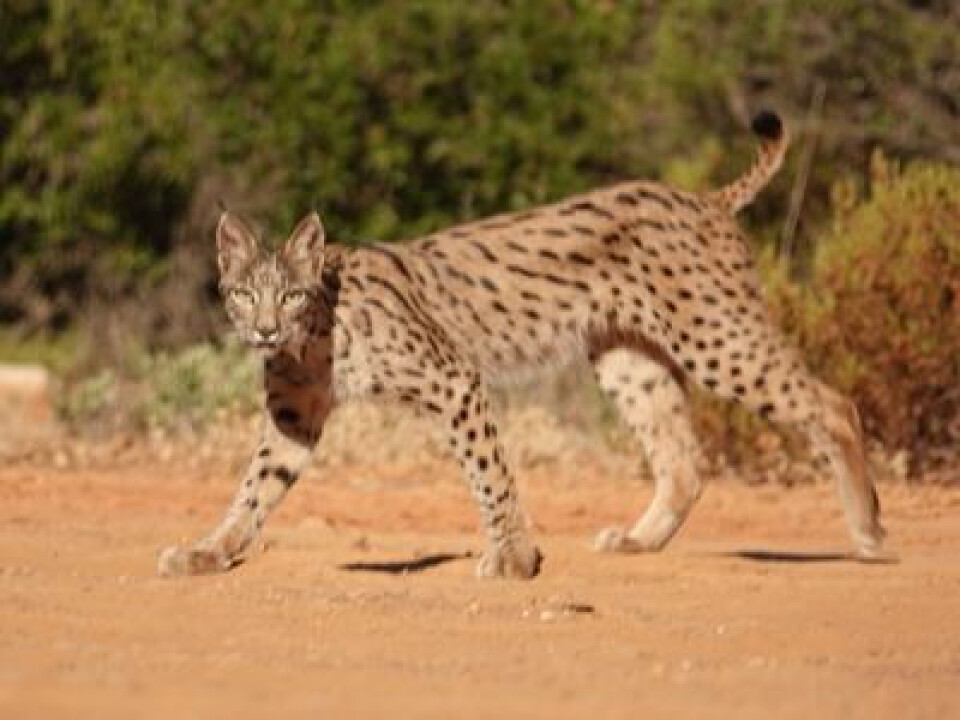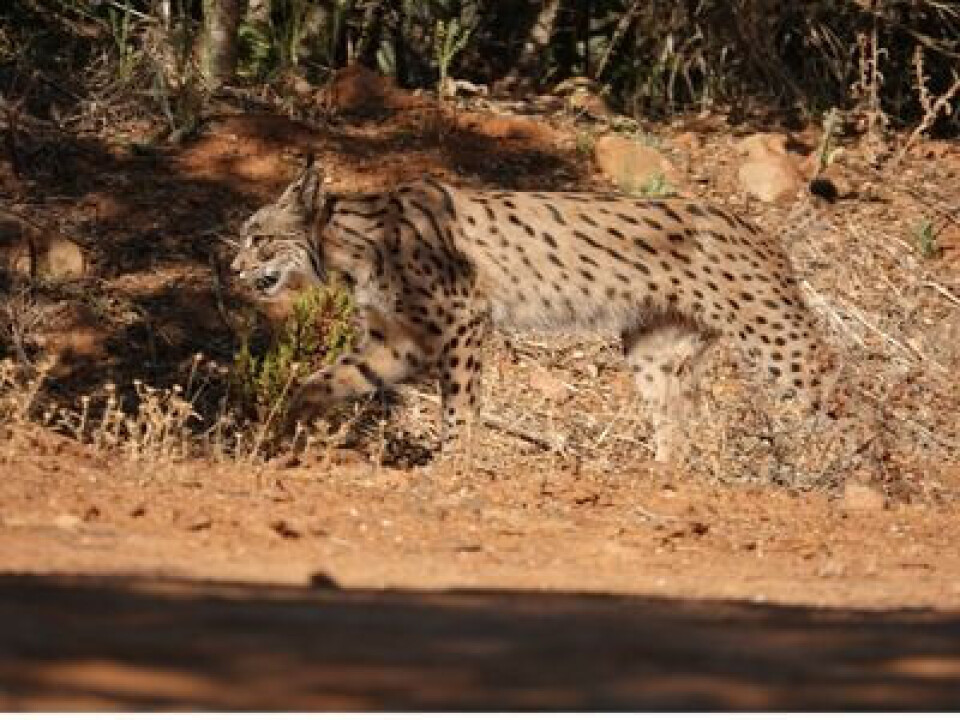-
France’s wild garlic season is here – but foragers should beware toxic lookalikes
Spring brings the fragrant plant to woodlands nationwide. We explain what to look out for
-
White storks make strong return in France via nest ‘platforms’ and clipped wings
The Ligue pour la Protection des Oiseaux shares the conservation challenges in saving these birds from extinction
-
Efforts to reintroduce black vultures in France
Plus, wildlife spotter, Jonathan Kemp, shares his experience of searching for bearded vultures around his home in Aude
Lynx spotting adventure gives hope to reintroduction scheme in France
The dazzling spectacle of a prowling Iberian lynx is thanks to one of Europe’s most successful conservation programmes

In front of us the ochre earth glowed dully as the sun crept higher. At dawn the bird activity had been constant; more than 30 species had touched down amid small swirls of dust.
The red legged partridges (Predrix rouge) walked in family groups, hesitant, coming from afar in the scrubby bushes and burnt grass; the rabbits (Lapin de garenne) singly or in twos.
All the larger species were wary, never staying for long to drink; a quick bath, a splatter of drops.
By mid-morning it was mainly silent, save the quiet whirr of the tiny fans we had to combat the heat, the mechanical click of our cameras, the occasional chatter of the magpie gangs, scruffy and down at heel, no longer like smart black guys in their finery, hanging out on the street corners of American cities, that I know from the magpies in the cooler north.
Was that an alarm call? Why had they all suddenly scattered, retreating out of sight to hide away in the deep shadow of the holm oak branches? Was this the moment?

Photo: Red legged partridges come to drink at the water hole; Credit: Jonathan Kemp
Iberian lynx spotting in southern Spain
I have just come back from a trip to southern Spain in search of sightings of the rare Iberian lynx (Lynx pardelle).
The species is now listed as endangered, and at the beginning of the 21st century was reduced to only 94 individuals in two isolated populations in Andalusia.
However, intense conservation measures have since helped to increase the population to 1,668 in May of 2023.
It is fortunate that there were two populations, as individuals have been translocated from one to the other in order to increase the gene pool, and there have been captive breeding programmes since 2007, making it one of Europe’s most successful conservation programmes.
Read more: Two lynx kittens born in northern Vosges - the first in 400 years
Rabbits are encouraged for the lynx to hunt
There are estates where water holes are maintained and which are a draw for wildlife in the harsh, dry, climate. Here, you have a good chance of seeing this magnificent feline, one of Europe’s top predators.
Rabbits have been encouraged to breed on the estates, and we certainly saw many.
The estates are mainly established for photographers, but you have to be committed to see this animal. My friend had tried, unsuccessfully, on four previous occasions.
There are simple hides set up near the ponds, and two sessions per day are offered.
The first starts well before dawn for about five hours and another for the last three hours of the afternoon leading up to dusk. In midsummer it can be very hot – drinking water is a necessity.

Photo: Rabbits have been encouraged to breed on the estates; Credit: Jonathan Kemp
And then she strode out like a master predator
We waited in the sunken hide, our heads barely above the level of the water, hidden behind one way glass.
And then she strode out onto the clearing, walking with feline grace on the velvet paws which sheathed the retractable claws, her grasping weapons.
One brief glance of the yellow eyes, the look of a true predator, never stopping in the flow across the stretch of a cricket pitch before merging once more into the shadows.
Not really hunting, just a checking of the action by an animal that has nothing to fear; arrogant, liquidly agile, a master predator on the prowl. A slink of menace.

Photo: Yellow eyes with the look of a true predator; Credit: Jonathan Kemp
She was the colour of earth
Five minutes later she re-crossed, this time with not even a glance towards the pond, knowing that no bird or rabbit would linger with its life in so much danger.
All ambient sounds had long ceased, and it took several minutes before the flutter of wings came back – small birds too insignificant to be taken as prey.
She was the colour of the earth and with the speckling of black dots would be invisible both night and day if she so wished, as this lynx is capable of hunting nocturnally and diurnally.
She was about 90 centimetres in length. The form of the body is interesting, showing powerful hind quarters that enable lynx to jump nearly two metres in the air after fleeing birds, and they can leap more than seven metres horizontally when needed.
It is not fully understood why they have tufts on their ears; one theory is that they act like whiskers, detecting movements in the surrounding environment, another is that they enhance hearing.
Magnificent. We were very happy.

Photo: The lynx’s speckled black dots are perfect camouflage day or night; Credit: Jonathan Kemp
Hope for the Eurasian Lynx in France
This is not the species of lynx that exists in France. Found only, at the time of writing, in the Jura in the high Alps, but descending to lower altitudes to avoid deep snow in winter, is the Eurasian Lynx (Lynx boréal).
Historically, it was exterminated in the early 20th century, but following reintroduction in the Swiss Jura, it has slowly spread and may be found on the French side of the border – if you are lucky.
Very occasionally there are rumours (even in the Aude, my region) that someone has seen a lynx, but without photographic proof this remains just that, a rumour.
However, its future is far from assured, as in-breeding has led to lack of robust health – these cats will often mate with their close relations.
It is hoped that further reintroduction programmes will resolve the problem but, as always, there is strong resistance from the farming community, reluctant to risk their domesticated animals.
Lynx existed in Great Britain
Incidentally, the fossil record shows that lynx existed in Great Britain, but despite over 20 years of discussion about reintroducing it, no real decision has been taken, and therefore no progress has been made.
The Eurasian is larger than the Iberian, the biggest males weighing 30kg, whilst the Iberian will only achieve a little less than 13kg. So a bulkier animal altogether, evolved to capture its favourite prey, Roe deer (Chevreuil), able to survive the colder mountain habitat where it is to be found.
Some of the best photographs of lynx may be found on the website of Laurent Geslin, and he has released a DVD concentrating on the European Lynx in the Alps and Jura mountains.
Related articles
Protected forest cats come back from the brink of extinction in France
Brown bear numbers growing in French Pyrenees after reintroduction
Video: Wild wolf spotted in Brittany for first time in 109 years
























